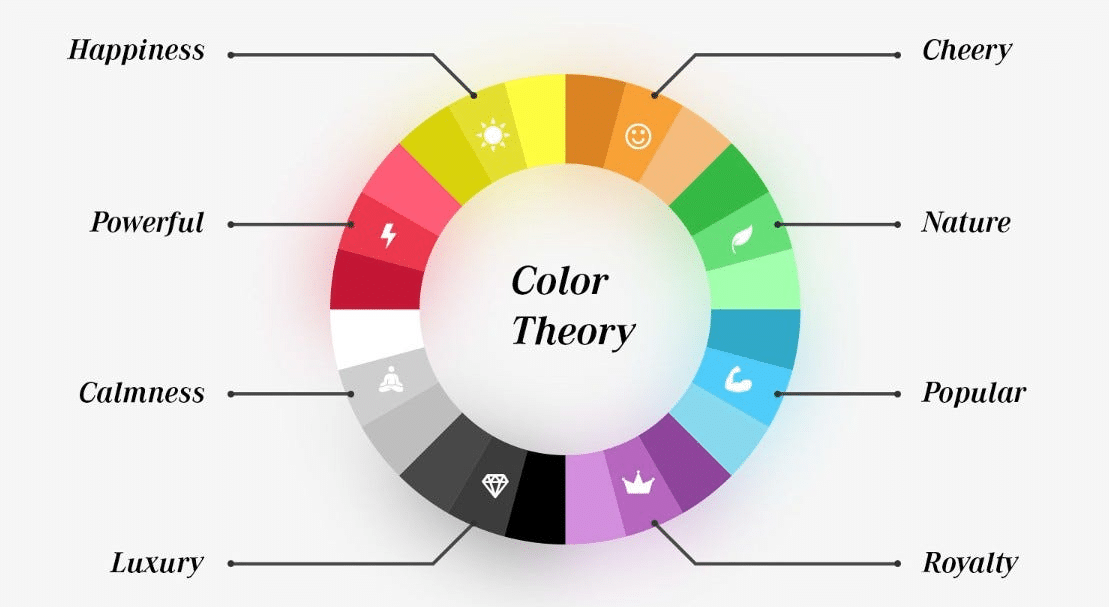Creating A Balanced Color Palette Crafting a balanced color palette is essential for achieving stunning interior design that reflects your style and enhances the overall atmosphere of your home. Color not only influences the aesthetic appeal but also affects mood and perception of space. Whether you are redecorating a single room or your entire home, understanding how to create a harmonious color scheme can elevate your interior design to new heights. Here’s how to create a balanced color palette that will transform your living spaces.
1. Understand Color Theory

Before diving into your design project, familiarize yourself with basic color theory. Colors can be categorized into three main groups:
- Primary Colors: Red, blue, and yellow are the foundation of all other colors.
- Secondary Colors: Created by mixing primary colors (e.g., green, orange, purple).
- Tertiary Colors: Formed by mixing primary and secondary colors (e.g., red-orange, blue-green).
Understanding how these colors interact on the color wheel will help you choose combinations that are visually appealing.
2. The 60-30-10 Rule

A classic guideline for creating a balanced color palette is the 60-30-10 rule. This rule suggests that:
- 60% of the room should be a dominant color (typically for walls or large furniture).
- 30% should be a secondary color (used for upholstery or larger decor items).
- 10% should be an accent color (for smaller decor pieces like cushions, art, or accessories).
This formula helps maintain balance while allowing for creativity and personality in your design.
3. Choose a Color Scheme
Selecting a cohesive color scheme is crucial for achieving harmony in your space. Here are some popular options:
- Monochromatic: Using variations of one color (light to dark shades) creates a sophisticated and cohesive look.
- Analogous: Choosing colors that are next to each other on the color wheel (e.g., blue, blue-green, green) fosters harmony and tranquility.
- Complementary: Using colors opposite each other on the wheel (e.g., blue and orange) creates vibrant contrast and energy.
Consider the mood you want to evoke when selecting your scheme; softer tones can create calmness, while bold contrasts can energize a space.
4. Test Your Colors

Before committing to a full palette, test your chosen colors in the actual space. Paint small sections of walls or use large swatches to see how the colors look at different times of day and under various lighting conditions. This practice helps ensure that the colors work well together and with existing furnishings.
5. Incorporate Neutrals
Neutrals play an essential role in balancing bold colors within your palette. Shades like white, gray, beige, or taupe can help ground vibrant hues and provide breathing room in your design. Use neutrals for larger surfaces like walls or furniture to create a backdrop that allows accent colors to shine.
6. Consider Texture and Patterns
Incorporating texture and patterns adds depth to your design and enhances visual interest without overwhelming the space. Mix materials like wood, metal, fabric, and glass while keeping your color palette in mind. Patterns in textiles—such as throw pillows or rugs—can introduce additional colors while maintaining cohesion through shared hues.
Also Read : How To Incorporate Transitional Interior Design In Your Space
Conclusion
Creating a balanced color palette is an art that requires careful consideration of color theory, personal style, and the intended mood of your space. By applying principles like the 60-30-10 rule, choosing complementary schemes, testing colors in situ, incorporating neutrals, and adding texture through patterns, you can achieve stunning interior designs that reflect your personality while enhancing comfort and functionality in your home.
FAQs
What is the 60-30-10 rule in interior design?
The 60-30-10 rule suggests using 60% of a dominant color, 30% of a secondary color, and 10% of an accent color to create balance in a room.
How do I choose a color scheme for my home?
Consider the mood you want to create and choose from monochromatic, analogous, or complementary schemes based on how you want each room to feel.
Can I mix different patterns in my decor?
Yes! Mixing patterns is encouraged; just ensure they share at least one common color to maintain cohesion within the space.
How do I test paint colors before committing?
Paint small sections of walls or use large swatches to observe how colors look at different times of day under various lighting conditions.
What role do neutrals play in a color palette?
Neutrals provide balance by grounding bold colors and allowing them to stand out without overwhelming the space.
Are there any specific colors that promote relaxation?
Soft blues, greens, and muted grays are known for their calming effects and are great choices for bedrooms or relaxation areas.





